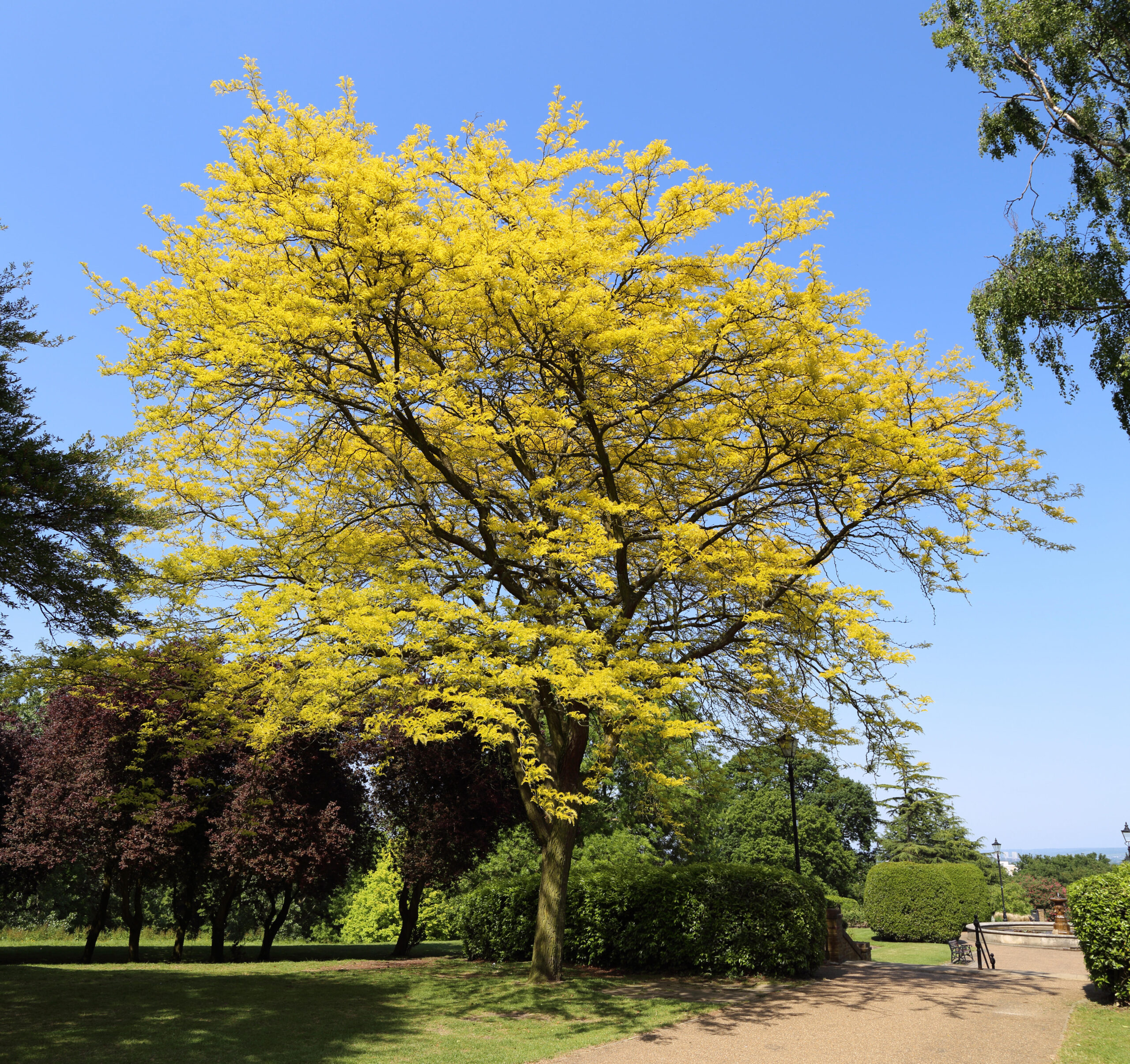If you are looking for a winter walk at this time of the year, we’ve got 196 acres of parkland for you to discover, with stunning views across the city. Alexandra Park is home to over 600 species of wildlife, plus more than 7,500 tree. Stephen Middleton from the Friends of Alexandra Park is kindly introducing us to some of his favourites. Here’s his selection for January…
Can you spot the small red flowers appearing on the Persian Ironwood (Parrotia persica), our January Tree of the Month? This tree, the only example of its kind in the park, is situated just a few metres from last month’s tree of the month near Alexandra Palace Way down from the Palm Court and opposite The Grove Car Park. At present it still has a cage around it as does a Liquidambar tree very nearby. Please watch out for the crocuses coming up under your feet.

This tree was planted on 3 March 2020 by TCV (The Conservation Volunteers) and they left the tree label from the nursery – a great help in the identification of our Persian ironwood.
The tree of the month is best known for its autumn colour, but is being highlighted in January as it is one of the first trees of the year in the park to produce flowers.
Persian ironwoods are native to Iran and the Caucasus and belong to the witch hazel family. The witch hazels themselves are similarly very early to come into flower.
The flowers of Parrotia persica appear before the leaves so they can be spotted in spite of their small size. Seeds develop later and with the drying out and contracting of the seed pod, the seeds are pushed out explosively. The leaves that appear after the flowers are a slightly asymmetrical oval with wavy edges.

Our small tree has quite plain, smooth bark, but as the tree matures it will break into plates like a London plane tree.
Persian ironwoods are slow growing and produce dense, hard wood although it is not known to have any practical use. All trees outside its native range have been planted in parks, gardens and streets as ornamental trees.
The scientific name of this tree (Parrotia) is in honour of Friedrick Parrot who scaled Mount Ararat in 1829 with the trees first arriving in this country just a decade or so later.
If you want to see its relatives, the witch hazels, flowering, check out the top area of the Rose Garden where there are two small examples on each side of the steps.





